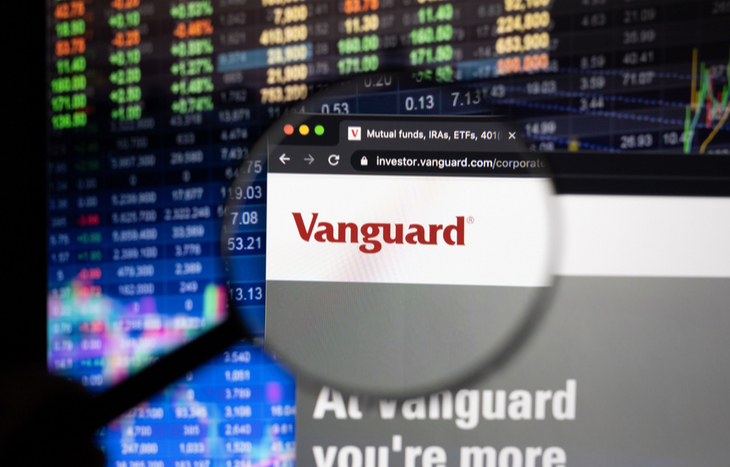What is the Vanguard Mid Cap Index?
Most investors are familiar with the major broad indices, and they likely own shares of ETFs or mutual funds that track them. But between broad market funds there’s boundless potential to capture value by tracking specific niches of the market. The Vanguard Mid Cap Index (VIMAX) is one such example. It specifically targeted mid-market companies.
This fund tracks the CRSP U.S. Mid Cap Index, which represents middle-market stocks with a market capitalization around $10-$30 billion. It’s a broad-spanning index that accounts for the top 70%-85% of the U.S. equity market by market cap. It’s a fantastic option for index investors who welcome the balanced risk-reward ratio of mid cap stocks.
Here’s a closer look at the Vanguard Mid Cap Index, what it represents and why it’s such an ideal investment for those seeking to prospect growth or value opportunities in the middle of the market.

Details of the Vanguard Mid Cap Index
Launched in 2001, the Vanguard Mid Cap Index is the only fund of its kind to track the CRSP U.S. Mid Cap Index. In doing so, it uses data from the Center for Research in Security Prices (CRSP) to constitute and continually maintain balance. The fund has incredibly low fees and sees relatively low turnover among its constituents. Some of the specifics include:
- Fund total assets: $165.4 billion
- Total constituents: 380
- Median market cap: $27.4 billion
- Annual turnover: 15%
- Expense ratio: 0.05%
- Minimum investment: $3,000
These factors make the Vanguard Mid Cap Index a very approachable mid-market fund—one many investors use to gain exposure to companies they’re not necessarily familiar with, in a segment of the market that often goes overlooked.
Historic Performance of the Vanguard Mid Cap Index
With more than 20 years of data, any investor can look at the track record of this fund: it speaks for itself. Since it was introduced in 2001, it’s returned an annualized rate of 10.53%. Over the past decade, that figure has actually been higher: 15.73%. Those numbers have remained strong over the past five years: 14.13%. The fund has not only proven itself as a stalwart over time, it’s also shown that it continues to seek growth opportunities—and capitalize on them.
The Vanguard Mid Cap Index maintains a five-star Morningstar Return Rating and has seen positive returns for 15 out of the last 20 years (nonconsecutive).
The Benefits of Investing in VIMAX
There’s an abundance of benefits that come from investing in Vanguard funds—VIMAX in particular. Vanguard funds are well-reputed for their incredibly low fees and historically good performance. In fact, they’re often the de-facto selection for employer-sponsored retirement accounts for these exact reasons. When it comes to VIMAX, investors get these benefits and more.
VIMAX is one of the most well-balanced mid-market mutual funds out there. As mentioned, it’s the only one that tracks the CRSP U.S. Mid Cap Index, giving it an edge in the form of incredibly reliable price insights and index data. While its turnover rate is rising in recent years thanks to a historic bull market and surge of growth stocks, it still remains one of the most stable mid cap funds.
VIMAX is also well diversified. While it’s cited as being slightly overweight in technology companies as of 2021, it maintains a strong allocation across consumer discretionary goods, financials, healthcare and industrials, with small allocations sprinkled across other sectors. It’s strong mid-market diversification also means that the net assets of its largest 10 holdings only equate to 6.8% of the fund.
The Vanguard Mid Cap Index as an ETF
For those investors who prefer the liquidity of ETF investments over mutual funds, the Vanguard Mid Cap Index is available as an ETF. The Vanguard Mid-Cap ETF (VO) seeks to replicate the fund, passively tracking the CRSP U.S. Mid Cap Index with similar allocations. Performance between the two funds has been nearly identical over the years, with only slight variations between them due to fees.
VO has a slightly lower expense ratio than VIMAX, with no minimums outside of the cost per share buy-in. VIMAX has a minimum investment threshold of $3,000. Those seeking liquidity will find themselves naturally drawn to VO; index investors will gravitate to VIMAX.
Why Invest in the Vanguard Mid Cap Index?
If you’re drawn to the balanced risk and reward of small cap stocks and want to take a diversified approach, few managed funds offer the convenience and potential of the Vanguard Mid Cap Index. It’s a great way to delve into the opportunities of mid cap stocks, without trying to cultivate your own portfolio. Moreover, those who feel better about putting their investments into a managed fund will take solace in the fact that VIMAX has had the same manager since its inception, and the performance to show for it.
Find Opportunities in the Middle Market
Mid cap companies offer both up and down prospects. Catch them on the way up to capitalize on growth stocks that’ll only get bigger. When they’re on the way down, it’s a chance to prospect a value stock as it stabilizes. The best way to take advantage of the ebb and flow of the middle market is through a mid cap mutual fund. And there are few stalwarts more appealing than the Vanguard Mid Cap Index.
If you can overcome the barrier to entry into the fund and are comfortable with the risk-reward of mid caps, it’s a mutual fund worth looking into as a buy and hold over the long term.
To learn more about mutual fund investing, sign up for the Wealthy Retirement e-letter below. This daily newsletter gives you invaluable insights into the best retirement strategies and investment opportunities!





